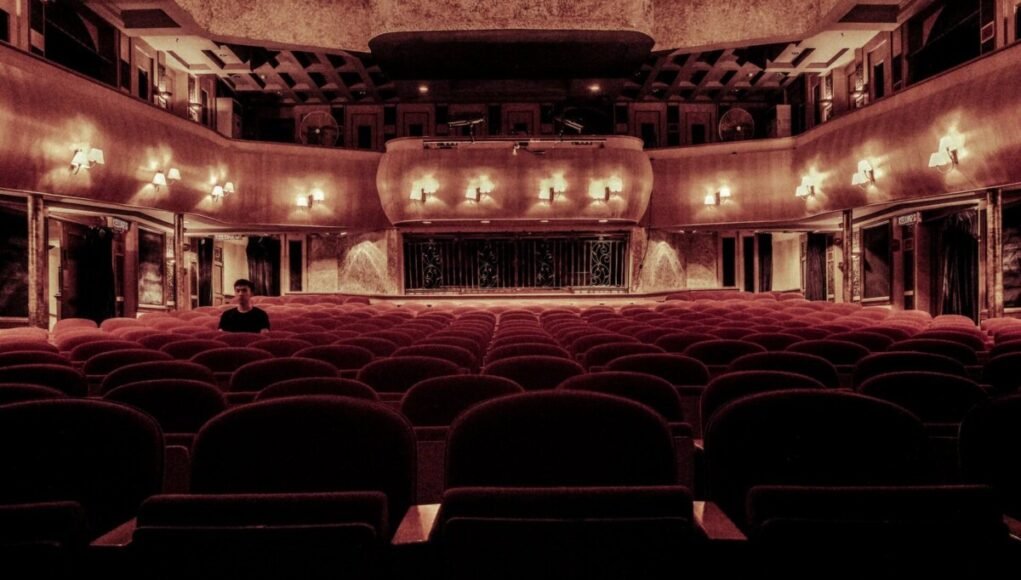Theater has an undeniable magic and allure. As the lights dim and the curtain rises, audiences are transported to different worlds right before their eyes. But what exactly goes on behind the scenes to create such captivating theatrical experiences? There are many secrets to the inner workings of theater production and stage magic that those outside the industry may not be privy to. This behind-the-scenes look will unveil the creative forces, technical wizardry, artistic mastery, and unsung heroes that come together to put on a live stage performance.
The Creative Force – From Script to Stage
Every great stage production starts with an idea in a playwright's imagination. Playwrights use the written word to explore the human experience and bring stories to life. Through dynamic characters, compelling dialogue, and dramatic structure, a script has the power to captivate audiences. But the playwright's work is just the beginning.
Once the script is finished, it falls into the hands of the director. This visionary leader acts as the creative force who shapes the production. Through their unique interpretation of the play, the director determines the overall concept, vision, and aesthetic of the production. They collaborate with designers and actors to bring the script from page to stage.
The director begins by thoroughly analyzing the script to understand the characters, relationships, plot, themes, and the playwright's intent. This allows them to develop a unifying vision for the production. They then hold auditions to find the perfect actors to inhabit each role. In rehearsals, the director helps the actors find the emotional truth in each scene as they shape their performances. This collaborative process allows the creative talents of both actors and directors to shine.
Other vital creative team members also collaborate with the director. Set designers, lighting designers, costume designers, and sound designers each add their own creative flair. Their contributions help fully realize the director's vision while creating an immersive world for the story to unfold. The creative process from script to stage is an intricate dance that relies on the vision, talents, and teamwork of many artistic minds.
The Technical Wizardry – Setting the Stage
While the creatives shape the story, mood, and characterizations, the technical theater team helps bring the director's vision to life through their stagecraft expertise. One of the most visual aspects of any production are the scenic elements. Scenic designers are tasked with creating set pieces and backdrops that depict the locations where the story unfolds. The sets transport the audience into new worlds using creative ingenuity and skilled craftsmanship.
Sets can range from abstract minimalism to intricate realism. The scenic team may build intricate revolving set pieces by hand or utilize projection mapping to create dynamic digital backgrounds. Their work happens largely behind the scenes in cavernous scene shops where they saw, weld, paint, and assemble the sets. Once completed, the sets are moved to the stage and seamlessly installed by stagehands.
Lighting design works hand-in-hand with the scenery to create mood, time of day, and location. Using advanced lighting equipment and technology, lighting designers use techniques like color, intensity, distribution, and movement to enhance dramatic impact. They strategically place lighting instruments around the stage and program complex lighting cues that shift from scene to scene.
Sound designers also help set the scene by providing realistic or abstracted sound effects and underscoring. The audio is played through strategically placed speakers and mixed using digital soundboards. With the sets, lights, and sounds working in harmony, the technical theater team succeeds in bringing the audience into the world of the play.
The Art of Performance – Bringing Characters to Life
Once the stage is set, it's time for the actors to step into the spotlight. An actor's preparation begins with breaking down the script to understand their character's motivations, personality, goals, and relationships. Through research and imagination, they envision how their character might walk, talk, and carry themselves.
In rehearsals, actors experiment with their characters under the guidance of the director. They determine how to deliver lines, move about the stage, and interact with fellow actors. Actors draw from their own experiences and empathy to connect with the emotional landscape of each scene. The rehearsal process allows the actors to live in their characters' skin until they become second nature.
The final ingredient is harnessing the transformative power of costumes, hair, and makeup. Costume designers create wardrobes that reflect each character's personality, social status, and context within the story. Hair and makeup artists add the finishing touches to fully transform the actors into their characters. Under the bright stage lights, before a live audience, the months of intense preparation culminate in the actors bringing the characters to life. The artistry involved in great acting relies on imagination, vulnerability, and masterful technique.
The Unsung Heroes – The Hidden Crew
While the actors get the applause, it takes an army of theater technicians working behind the scenes to execute a seamless production. The stage manager acts as the master organizer, calling light, sound, and set changes during performances. Stagehands swiftly move sets, furniture, and props on and off stage. Running crew members operate the lighting, sound, and other technical elements from backstage positions.
Dressers assist actors with quick costume changes, ensuring they are properly dressed for each scene. The props master meticulously prepares every prop and set piece needed. These are just a few of the essential roles that keep the production running like clockwork. Their work goes mostly unseen, but their commitment and professionalism are crucial.
Theater production is perhaps one of the most collaborative art forms, relying on the creativity, expertise, and teamwork of every individual involved. From the playwright's first scribbled notes to the stage manager's final curtain call, hundreds of people contribute their skills to share a story with an audience. That combined effort is the true secret behind the magic and spectacle of theater. So the next time you take your seat as the lights go down, remember all the people behind the scenes who make it possible. Without them, the show could not go on.
Conclusion
Behind the curtain exists a world full of artistry, imagination, and expertise. Playwrights, directors, designers, technicians, and actors all unite their individual talents to produce the stage magic enjoyed by audiences. Through creative vision, technical wizardry, masterful acting, and seamless collaboration, the blank page of a script comes to dazzling life under the bright stage lights. The next time you experience the wonder of live theater, appreciate the many people, artistic forms, and hidden secrets that made the production possible. Allow yourself to get lost in the collective illusion, and revel in the power of great storytelling.
































